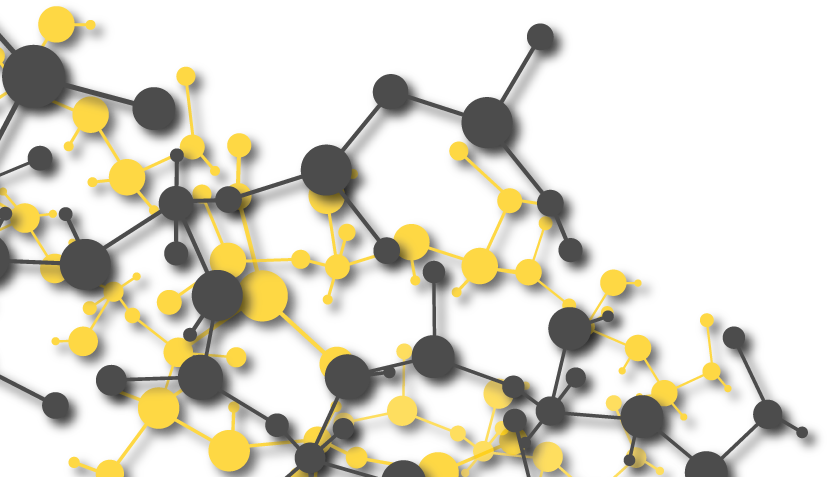When using cast polyurethane systems, the polyurethane casting process requires the right temperature for polyurethane components that are used in the process. Cast polyurethanes are processed in a liquid state. That is to say that the individual components of the system are liquified prior to mixing and then the mixed compound is cast into a mold or poured onto a surface to allow the cure to advance to a solid state.
Processing conditions can have a significant impact on the final properties of the cast polyurethane, regardless of the system used. Two of the processing parameters that have the most critical impact on the performance of the polyurethane/urea systems are the polyurethane melting temperature and the ratio of the prepolymer to the curative.
The amount of curative required to match the stoichiometry of the prepolymer is generally selected to improve a specific set of properties, including but not limited to tensile strength, or tear and abrasion resistance. For this reason, the ratio needs to be adhered to in the metering and mixing process.
However, the PU melting temperature also has a strong impact on the finished product, both during the mold curing process as well as in post-curing processing. Upon completion of the initial cure in the mold, the cast articles can be transferred to a post-curing stage to complete the reaction at an appropriate polyurethane temperature range to achieve the properties your project or operation desires.
The figure below outlines the cast polyurethane process steps:
In this blog, we'll address polyurethane temperature range requirements required to effectively work with numerous curatives such as diols, diamines, and formulated products that are used as chain extenders and curatives in polyurethane/urea systems.
Solid Curatives Used in Cast Polyurethane Systems
Many cast polyurethane systems utilize solid curatives including MOCA, MCDEA, HQEE, and HER to create a strong final product. These chemical products are melted and processed in a liquid state to be incorporated into the polyurethane.
Temperature requirements for these chain extenders are shown below, including how quickly they will set up and the hardness they are able to achieve.
MOCA-Cured Systems
MOCA is a widely used curative in the hot cast process, especially with TDI prepolymers heated to an appropriate PU melting temperature. It delivers polymers that feature excellent high-temperature property retention and good dynamic performance in the polyurethane casting process. Relative to other diamine curatives such as MBOEA, MCDEA, and DETDA, MOCA exhibits lower reactivity and a longer working life.
The melting point of MOCA is 98–102°C (208–216°F). Accordingly, the nominal operating temperature for a MOCA melter should be from 110 to 120°C (230–248°F). However, one limitation of MOCA in finding a compatible temperature for polyurethane is its susceptibility to higher temperatures, as MOCA will decompose. For this reason, avoid heating MOCA above 125°C (257°F).
MCDEA-Cured Systems
MCDEA is an outstanding solid aromatic diamine curative for high-performance cast polyurethane applications. It affords improved dynamic mechanical properties and low hysteresis. MCDEA-based formulations generally exhibit good abrasion resistance, good resilience and tear strength properties, and good processing characteristics. Typically, these properties are valuable in industrial wheels and tires, sport and amusement park wheels and rollers, industrial rolls, and conveyor belts.
The melting point of MCDEA is 87–90°C (189–194°F). Accordingly, the nominal processing temperature for MCDEA should be from 95–110°C (203–230°F), typically 100°C (212°F). MCDEA exhibits higher reactivity than MOCA. Consequently, the pot life of MCDEA/TDI systems is shorter compared to MOCA/TDI systems, and polyurethane melting temperature must be watched carefully.
HQEE-Cured Systems
HQEE is an aromatic diol chain extender for MDI prepolymer systems, creating polyurethane elastomers with excellent dynamic properties, good split tear resistance, and high resiliency. The HQEE/MDI elastomer series can parallel many of the performance attributes of MOCA/TDI systems.
Applications for MDI/HQEE elastomers include industrial wheels and tires, sport and amusement park wheels, pipe linings and coatings, rollers, industrial roll covers, gaskets, oil-field seals, and other high-performance end uses.
However, HQEE's high melting point at ~98°C (~208°F), combined with the fact that HQEE does not supercool, crystallizing quickly below its melting point, can create difficulties. It's important to uniformly heat and mildly agitate HQEE in the melting tank and preheat the prepolymer polyurethane temperature range to 90°C (194°F) or above before mixing HQEE in.
In addition, all HQEE transfer lines should be heated to 110°C (230°F) and insulated to prevent cold spots that might cause HQEE to crystallize in the lines and result in an inaccurate mix ratio or blockage. The mold temperature should be 110°C (230°F) or higher to prevent defects in the cast parts.
Another processing challenge encountered with HQEE as a chain extender is a phenomenon called “starring” on the surface of parts. This phenomenon has been attributed to the phaseout of the reaction product of HQEE and free MDI monomer, especially on mold surfaces temperatures below 110°C (230°F). It has been reported that low free MDI prepolymers exhibit a much lower tendency to starring because of the lower free MDI monomer content.
In some cases, other diols like HER or PTMEG can be added in small amounts to HQEE to facilitate maintaining a molten state, giving you a better PU melting temperature for the polyurethane casting process.
HER-Cured Systems
HER is an isomeric counterpart of HQEE and another aromatic diol chain extender for MDI prepolymer systems. The properties of HER extended MDI prepolymers are comparable to those of HQEE, but HER has a lower melting point of 89°C (192°F) and the ability to supercool. This offers significant processing advantages versus HQEE: lower processing temperatures, a broader processing temperature window, the absence of “starring,” and a lower tendency to crystallize in processing equipment.
After melting at 90–100°C (194–212°F), the HER temperature can be reduced to about 80°C (176°F) without crystallization, allowing a lower polyurethane melting temperature compared to HQEE without sacrificing cast quality and part durability.
In urethane elastomers, HER affords excellent mechanical properties; toughness; very good tear, cut, and abrasion resistance; and good resiliency, while providing a wider polyurethane temperature range in production.
Applications are the same as those of HQEE, including industrial wheels and tires, sport wheels, die-forming pads and coatings, rollers, industrial roll covers, gaskets, oil-field seals, conveyor parts, and other high-performance end uses.
Liquid Curatives Used in Cast Polyurethane Systems
Some industrial chemical curatives for cast polyurethane are in a liquid state at room temperature, but their viscosity may be too high for efficient mixing with the prepolymer. In such cases, the curative temperature usually needs to be increased to reduce viscosity. Below are the temperature requirements for several liquid diamine and diol curatives used in cast polyurethane systems.
Diamines
Some commonly used liquid aromatic diamine curatives are DETDA, DMTDA, MBOEA, and P-1000. These diamines allow processing at a lower temperature for polyurethane casting. However, it is known that higher temperature cures can provide improved tensile strength as well as tear and abrasion resistance.
DETDA and MBOEA exhibit very fast cure rates and short pot lives with TDI prepolymers. DMTDA has a lower reactivity and exhibits a workable pot life at 100°C (212°F) comparable to that of MOCA/TDI systems.
Blends of diamine curatives, such as MBOEA with DETDA, can reduce the overall viscosity and improve flow at a lower PU melting temperature, making it a superior option.
P-1000 is a polymeric diamine curative that’s a viscous liquid at room temperature and exhibits a much lower reactivity in TDI systems. It can also be used in MDI systems. P-2000 is a waxy solid at ambient temperatures with a lower melting point in the 18–23°C range. Both curatives benefit from processing at a higher polyurethane melting temperature to reduce viscosity.
Diols
Liquid diol chain extenders such as 1,4-butanediol (BDO) and 2-methyl-1,3-propanediol (MPO) can be used in MDI-based cast polyurethane systems at room temperature. Processing temperature and catalyst loading levels impact pot life of the diol/MDI systems. Uncatalyzed systems can have a pot life of 10–20 minutes at 70°C; however, processing at higher temperatures or using catalysts will significantly reduce the pot life.
When processing cast polyurethane systems, it’s important to note that BDO freezes at 20°C (68°F). Therefore, it needs to be maintained above this freezing point to avoid crystallization in the equipment lines and phase separation in a B-side formulation of the polyurethane casting process.
MPO is another liquid primary-diol chain extender with a freezing point of -54°C. As a BDO isomer, it has identical molecular and equivalent weights as BDO with better compatibility for polyester- and polyether-based prepolymers, providing a much lower temperature for polyurethane casting.
Note that the resulting elastomer will be softer compared to the one produced with BDO and will exhibit better hydrolytic stability. BDO reactivity is only slightly faster than MPO, and blends of BDO with MPO are commonly used very successfully.
Whether you want to purchase these curatives or desire additional information on how to use them properly, contact Gantrade Corporation to gain the expertise and support of our technical team.













